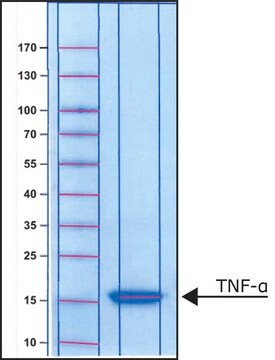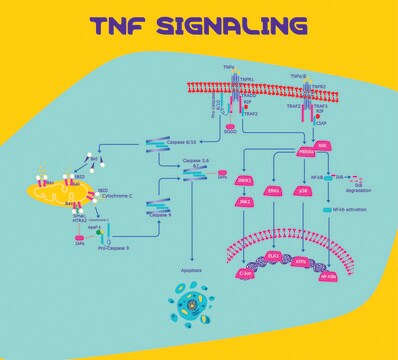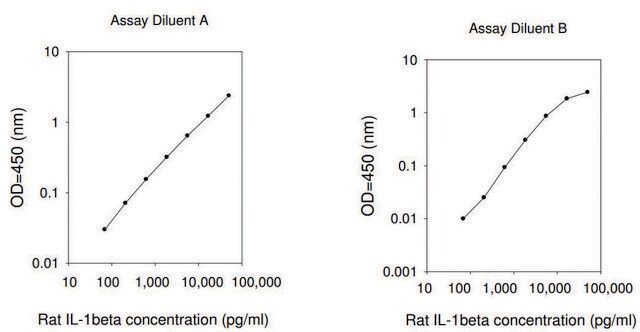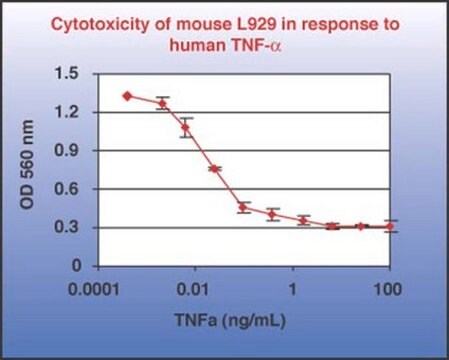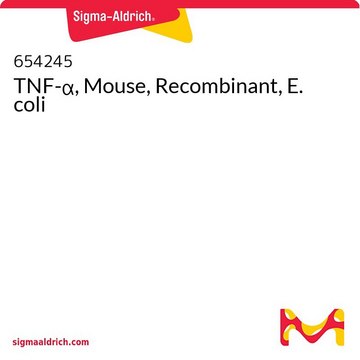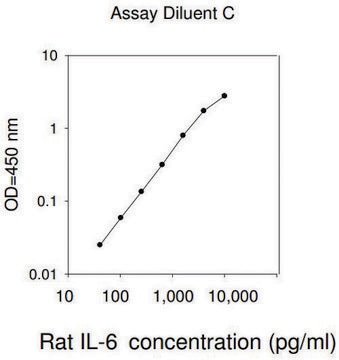T5944
Tumor Necrosis Factor-α from rat
≥98% (SDS-PAGE and HPLC), recombinant, expressed in E. coli, powder, suitable for cell culture
Sinonimo/i:
Cachectin, TNF-α
About This Item
Prodotti consigliati
product name
Tumor Necrosis Factor-α from rat, TNF-α, recombinant, expressed in E. coli, powder, suitable for cell culture
Origine biologica
rat
Livello qualitativo
Ricombinante
expressed in E. coli
Saggio
≥98% (SDS-PAGE and HPLC)
Forma fisica
powder
Qualità
endotoxin tested
PM
predicted mol wt ~17 kDa
Confezionamento
pkg of 10 μg
pkg of 50 μg
Condizioni di stoccaggio
avoid repeated freeze/thaw cycles
tecniche
cell culture | mammalian: suitable
Impurezze
<1 EU/μgtested (LAL test)
Colore
white
Solubilità
water: soluble
N° accesso UniProt
Temperatura di conservazione
−20°C
Informazioni sul gene
rat ... Tnf(24835)
Descrizione generale
Applicazioni
- To stimulate inducible nitric oxide synthase (iNOS) expression in the macrophages as an indication of M1 macrophage activation
- To study its effect on pancreatic β cell apoptosis
- To evaluate the effect of progesterone on the expression of tumor necrosis factor (TNF)-α in synovial membrane
- As a blocking antigen in the control, for immunohistochemical analysis
Azioni biochim/fisiol
Stato fisico
Risultati analitici
Codice della classe di stoccaggio
11 - Combustible Solids
Classe di pericolosità dell'acqua (WGK)
WGK 3
Punto d’infiammabilità (°F)
Not applicable
Punto d’infiammabilità (°C)
Not applicable
Certificati d'analisi (COA)
Cerca il Certificati d'analisi (COA) digitando il numero di lotto/batch corrispondente. I numeri di lotto o di batch sono stampati sull'etichetta dei prodotti dopo la parola ‘Lotto’ o ‘Batch’.
Possiedi già questo prodotto?
I documenti relativi ai prodotti acquistati recentemente sono disponibili nell’Archivio dei documenti.
I clienti hanno visto anche
Il team dei nostri ricercatori vanta grande esperienza in tutte le aree della ricerca quali Life Science, scienza dei materiali, sintesi chimica, cromatografia, discipline analitiche, ecc..
Contatta l'Assistenza Tecnica.